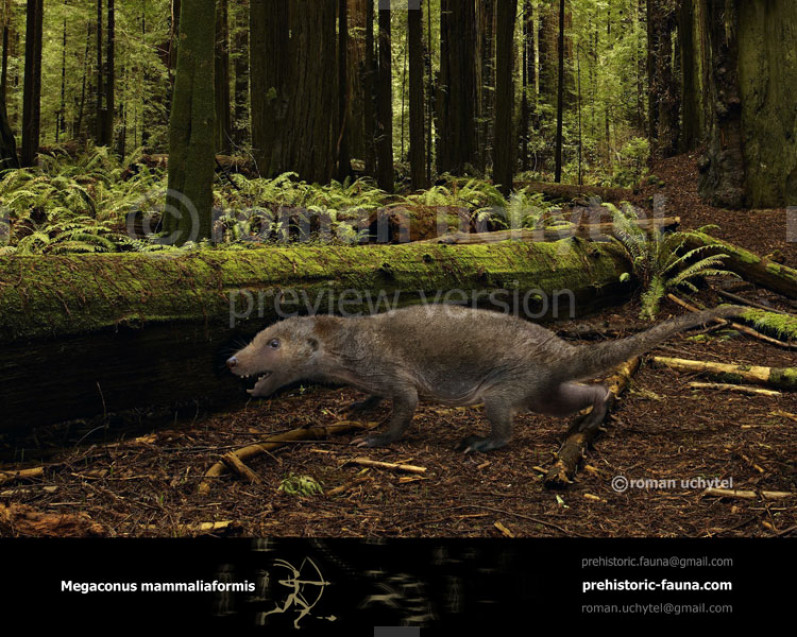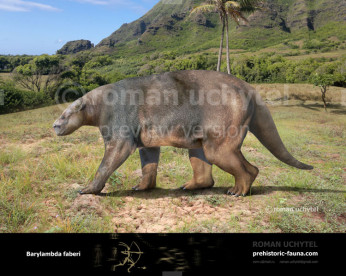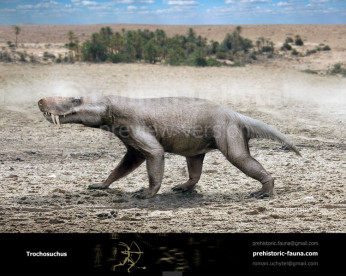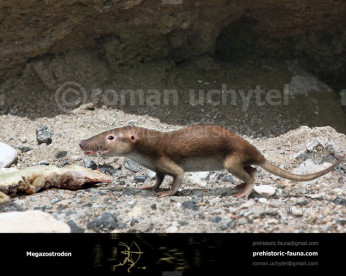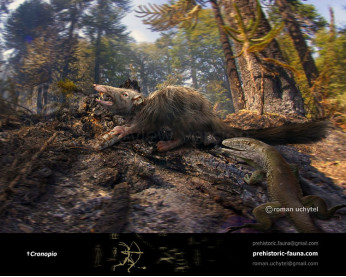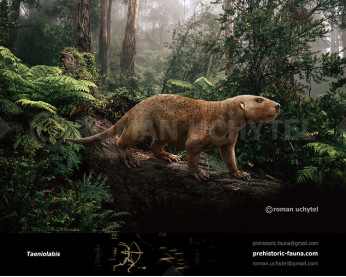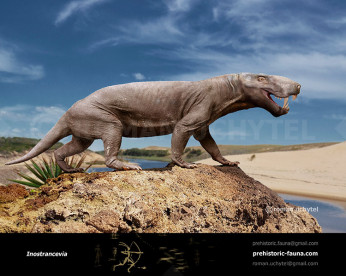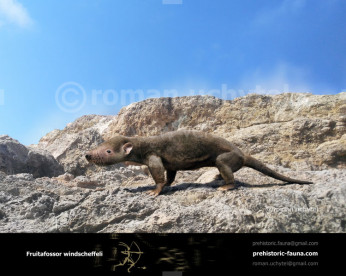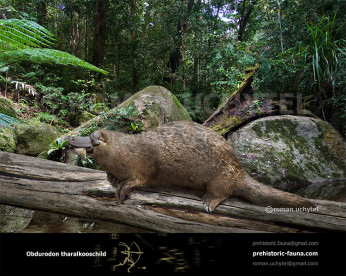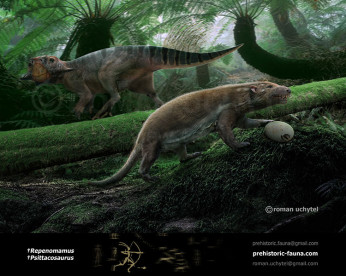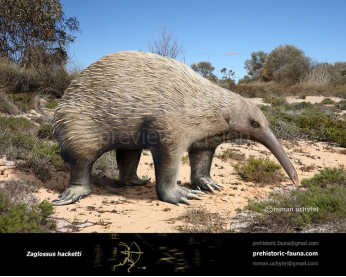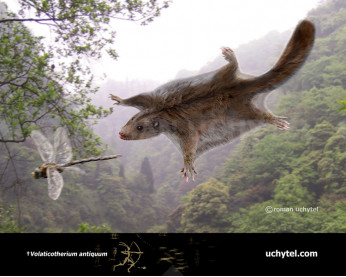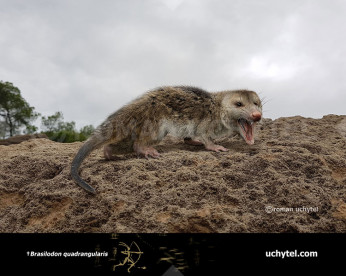Megaconus
421421Megaconus (†Megaconus (Zhou et al., 2013))
Kingdom: Animalia
Class: Mammalia
Order: †Haramiyida
Family: †Eleutherodontidae
Dimensions: total body lengths reaching up to 20 cm, weight ~250 g
Temporal range: from the Middle Jurassic Tiaojishan Formation of Inner Mongolia, China (165 Ma)
Type species: Megaconus mammaliaformis
Megaconus is an extinct genus of mammaliaforms from the Middle Jurassic Tiaojishan Formation of Inner Mongolia, China. The type and only species, Megaconus mammaliaformis (nicknamed Jurassic Squirrel), was first described in the journal Nature in 2013. Megaconus is thought to have been a herbivore that lived on the ground, having a similar posture to modern-day armadillos and rock hyraxes. Megaconus is a member of a group called Haramiyida. A phylogenetic analysis published along with its first description showed that haramiyidans originated before the appearance of true mammals, but an accompanying description of the haramiyidan Arboroharamiya in the same issue of Nature indicated that haramyidans were true mammals. If haramiyidans are not mammals, Megaconus would be one of the most basal ("primitive") mammaliaforms to possess fur, and an indicator that fur evolved in the ancestors of mammals and not the mammals themselves.
Megaconus is one of the few early mammaliaforms known from a complete skeleton. The skeleton includes both the jaw bones and the teeth, which are the most informative features because they allow for comparisons with other mammaliaforms known only from dental features. Megaconus has a dentition similar to those of rodents, with large incisors at the front of the jaws and broad molars in the back. One distinguishing feature of Megaconus is a pair of enlarged premolar teeth in the lower jaw. The teeth of Megaconus have many cusps, allowing them to interlock tightly when the jaws are closed. If Megaconus is a non-mammalian mammaliaform, it is one of the most basal mammaliaforms to possess such complex teeth.
Megaconus is estimated to have weighed about 250 grams. It probably had an outwardly similar appearance to multituberculates, a major group of Mesozoic mammals. However, its body is longer than those of multituberculates and most other Mesozoic mammaliaforms, having more back vertebrae (24) than other early mammals. Megaconus is inferred to have been ambulatory, meaning that it walked on the ground. Its claws are short, meaning that they were not suitable for digging, and only slightly curved, meaning that they were not suitable for climbing. Remains of fur are preserved on parts of the skeleton. The fur consists of dark guard hairs and a lighter layer of underfur. Fur seems to be absent on the underside of the abdomen. A keratinous spur on the rear leg may have been used to deliver poison, like the spur of the living platypus.
Megaconus (†Megaconus (Zhou et al., 2013))
Kingdom: Animalia
Class: Mammalia
Order: †Haramiyida
Family: †Eleutherodontidae
Dimensions: total body lengths reaching up to 20 cm, weight ~250 g
Temporal range: from the Middle Jurassic Tiaojishan Formation of Inner Mongolia, China (165 Ma)
Type species: Megaconus mammaliaformis
Megaconus is an extinct genus of mammaliaforms from the Middle Jurassic Tiaojishan Formation of Inner Mongolia, China. The type and only species, Megaconus mammaliaformis (nicknamed Jurassic Squirrel), was first described in the journal Nature in 2013. Megaconus is thought to have been a herbivore that lived on the ground, having a similar posture to modern-day armadillos and rock hyraxes. Megaconus is a member of a group called Haramiyida. A phylogenetic analysis published along with its first description showed that haramiyidans originated before the appearance of true mammals, but an accompanying description of the haramiyidan Arboroharamiya in the same issue of Nature indicated that haramyidans were true mammals. If haramiyidans are not mammals, Megaconus would be one of the most basal ("primitive") mammaliaforms to possess fur, and an indicator that fur evolved in the ancestors of mammals and not the mammals themselves.
Megaconus is one of the few early mammaliaforms known from a complete skeleton. The skeleton includes both the jaw bones and the teeth, which are the most informative features because they allow for comparisons with other mammaliaforms known only from dental features. Megaconus has a dentition similar to those of rodents, with large incisors at the front of the jaws and broad molars in the back. One distinguishing feature of Megaconus is a pair of enlarged premolar teeth in the lower jaw. The teeth of Megaconus have many cusps, allowing them to interlock tightly when the jaws are closed. If Megaconus is a non-mammalian mammaliaform, it is one of the most basal mammaliaforms to possess such complex teeth.
Megaconus is estimated to have weighed about 250 grams. It probably had an outwardly similar appearance to multituberculates, a major group of Mesozoic mammals. However, its body is longer than those of multituberculates and most other Mesozoic mammaliaforms, having more back vertebrae (24) than other early mammals. Megaconus is inferred to have been ambulatory, meaning that it walked on the ground. Its claws are short, meaning that they were not suitable for digging, and only slightly curved, meaning that they were not suitable for climbing. Remains of fur are preserved on parts of the skeleton. The fur consists of dark guard hairs and a lighter layer of underfur. Fur seems to be absent on the underside of the abdomen. A keratinous spur on the rear leg may have been used to deliver poison, like the spur of the living platypus.

